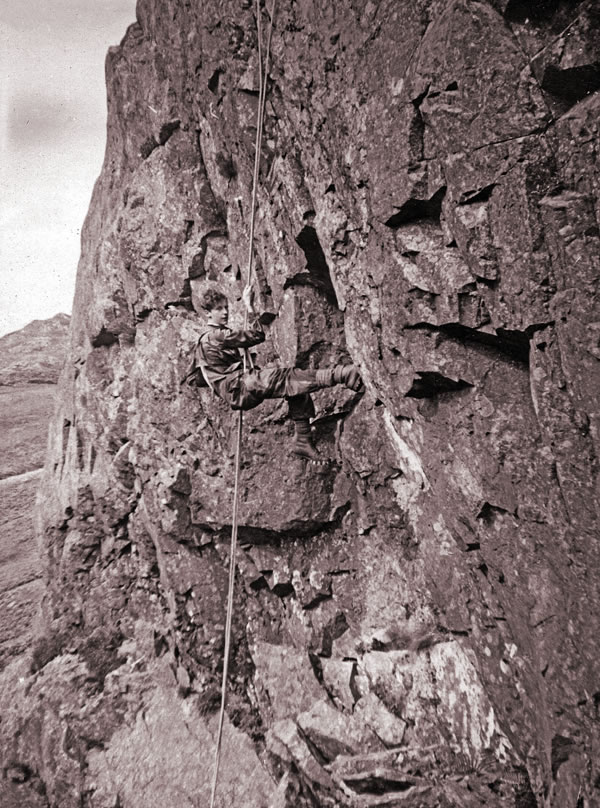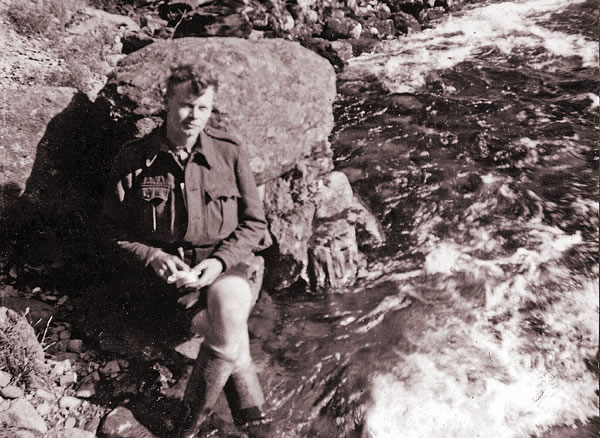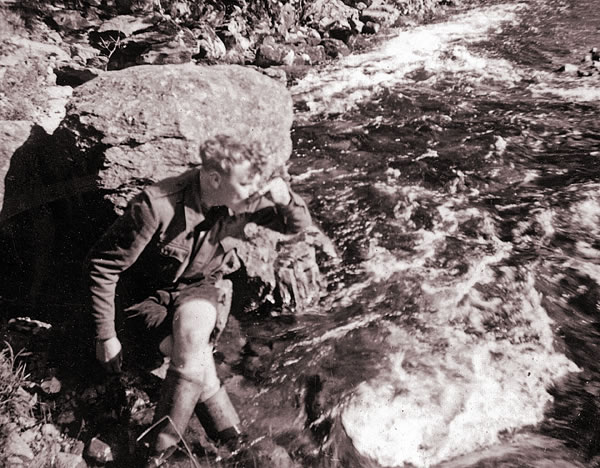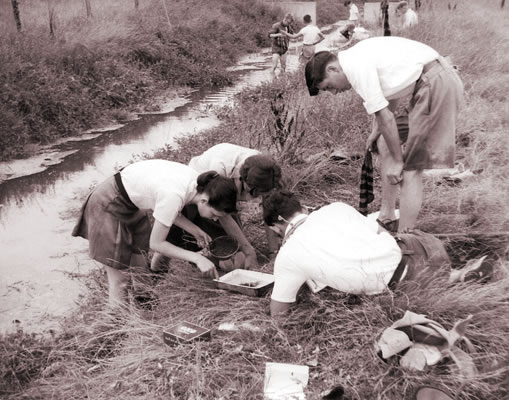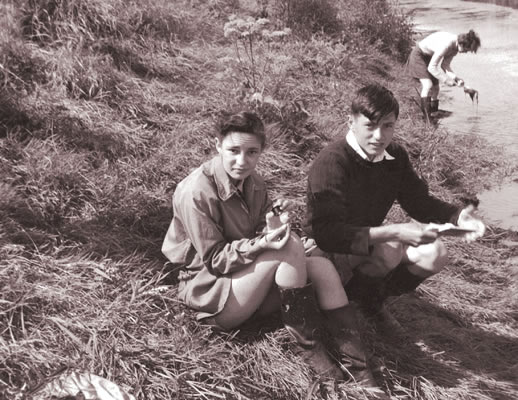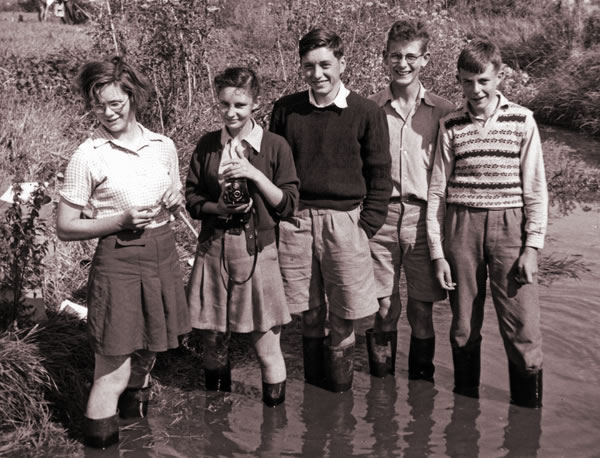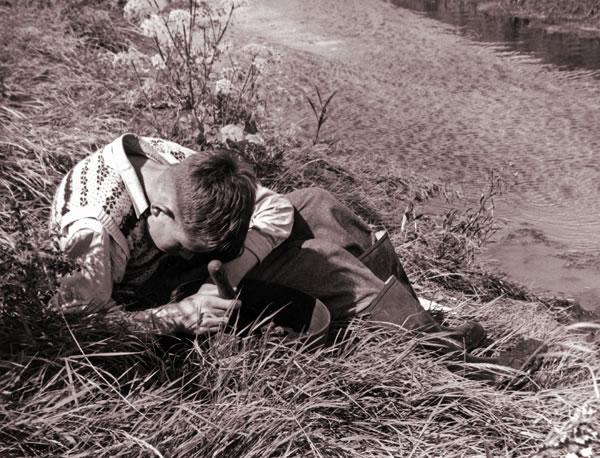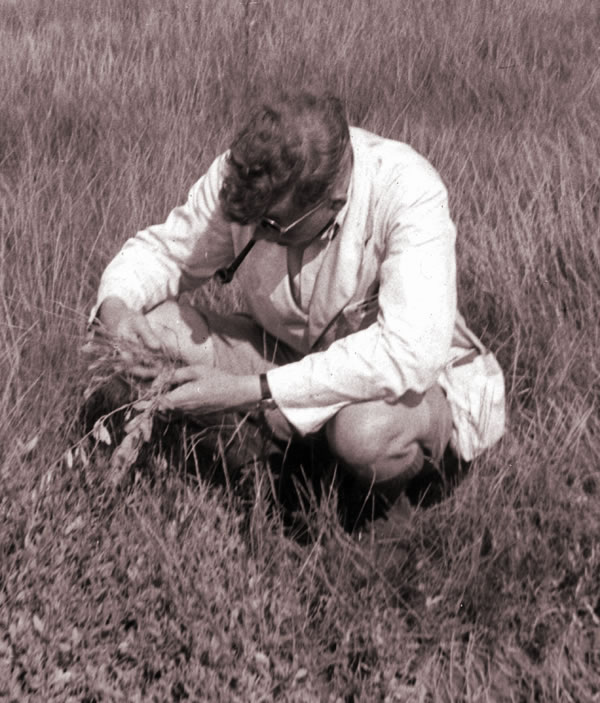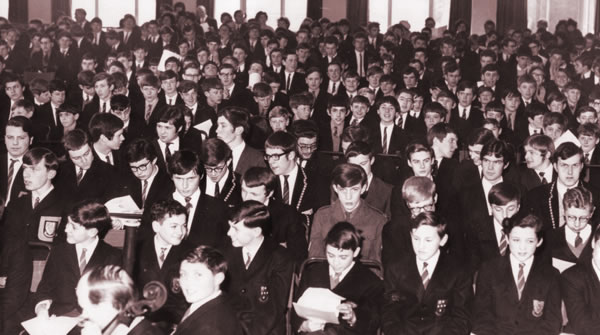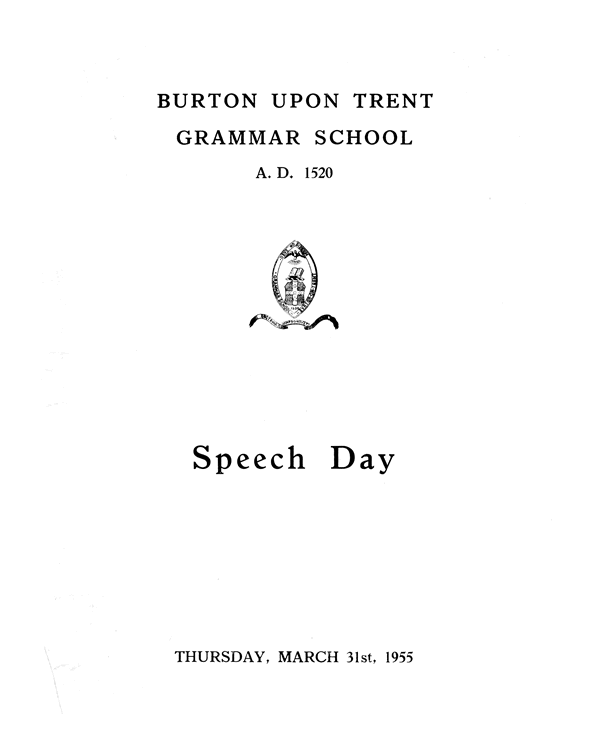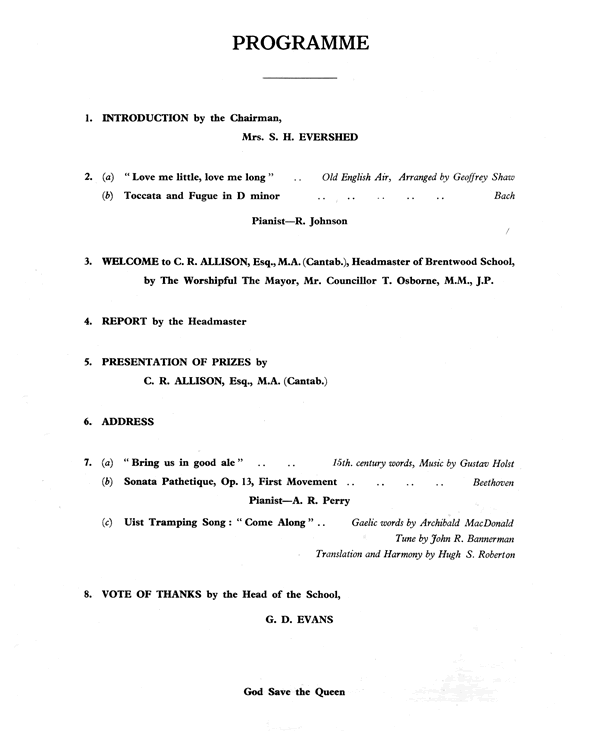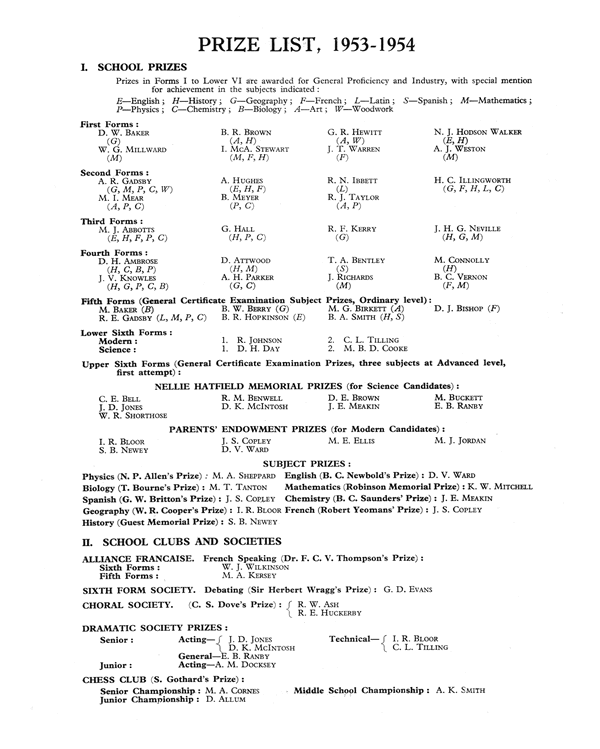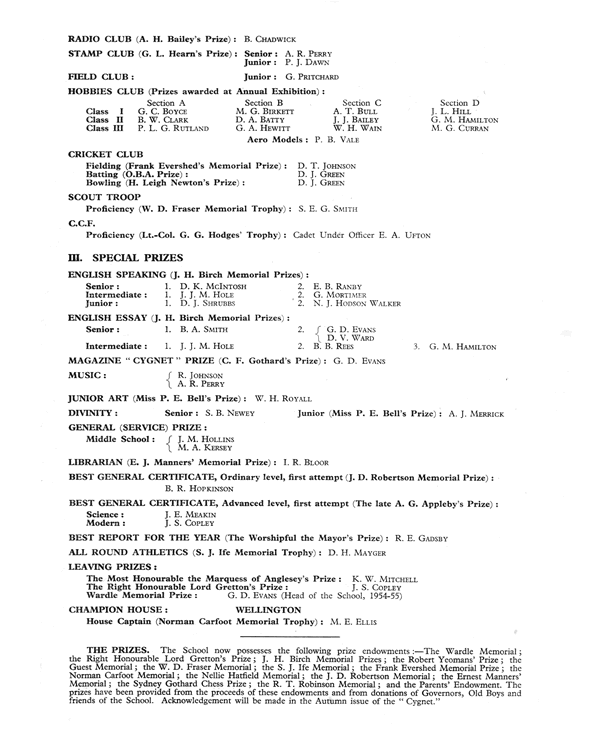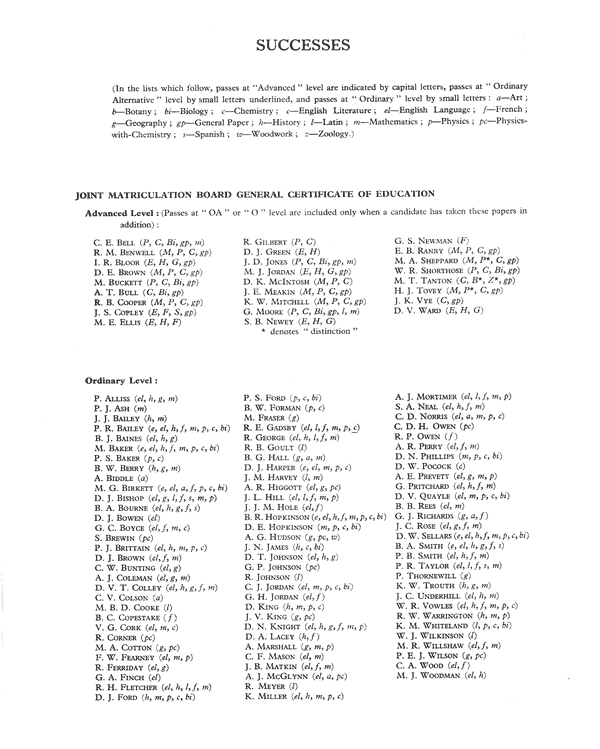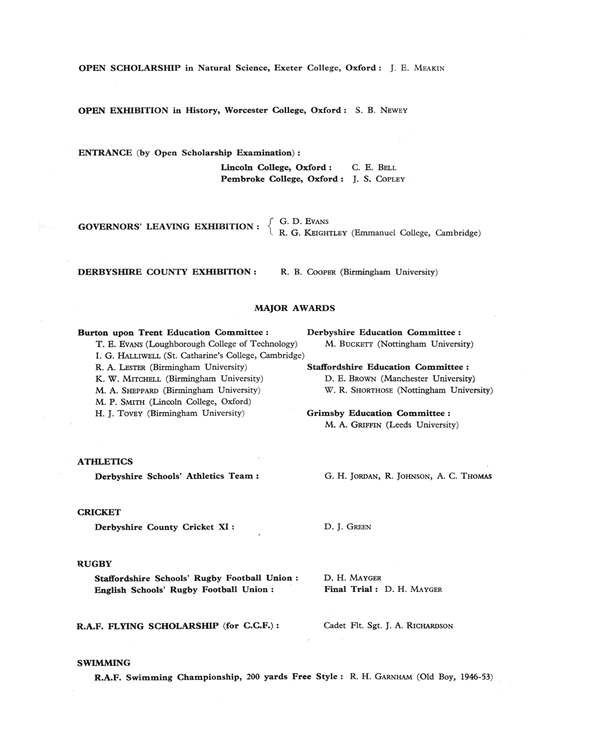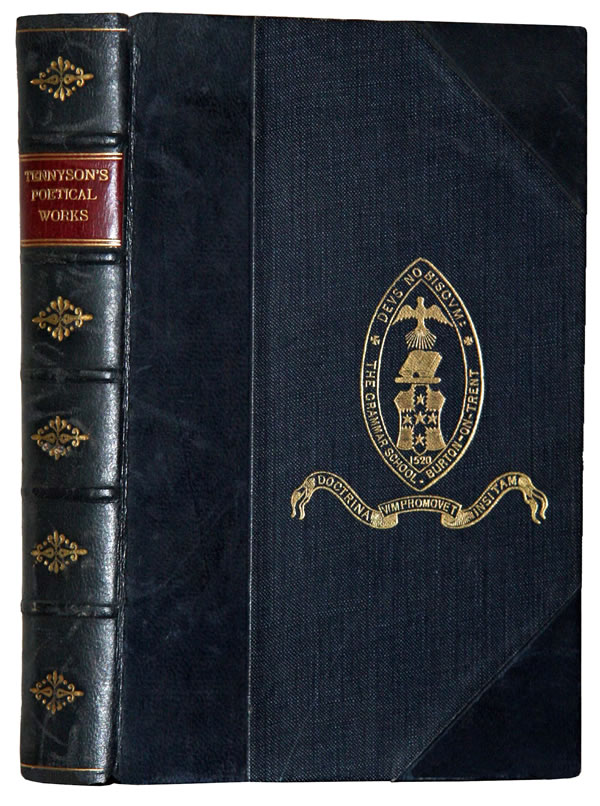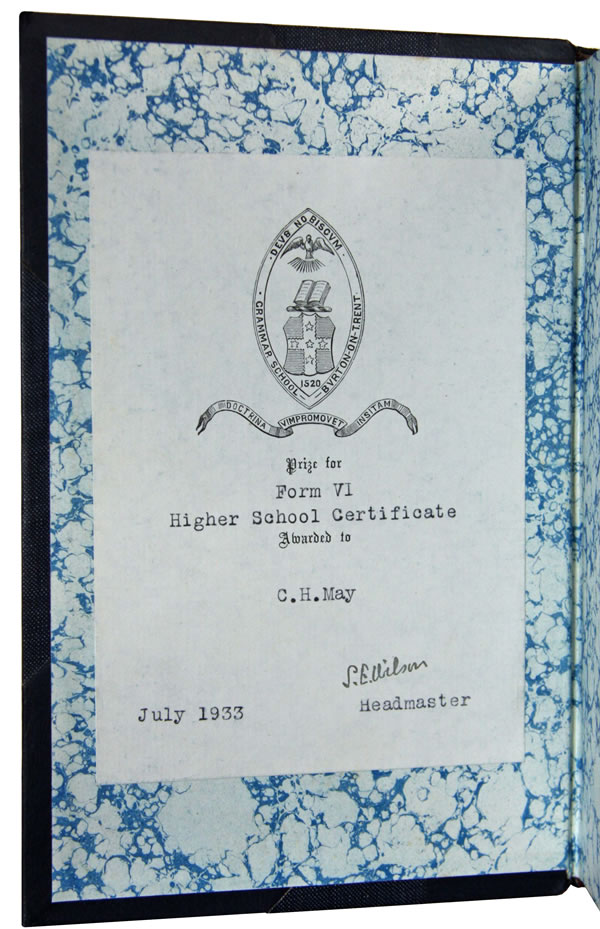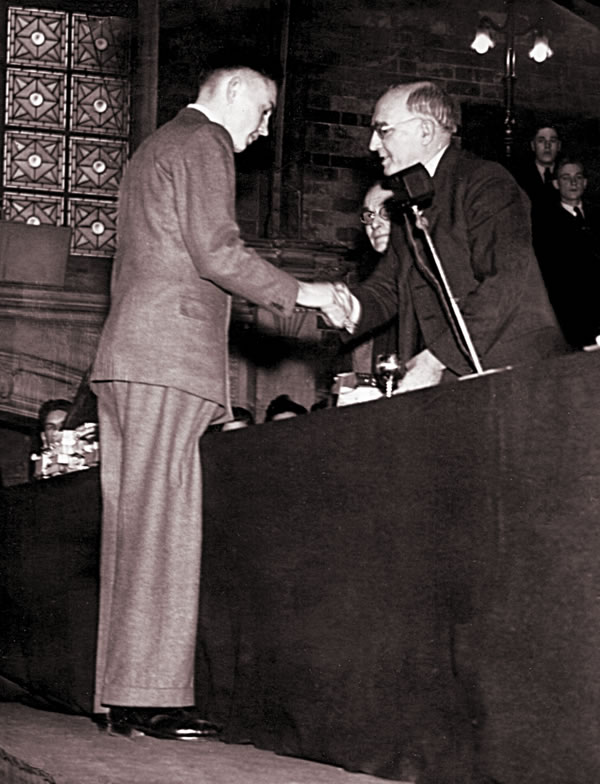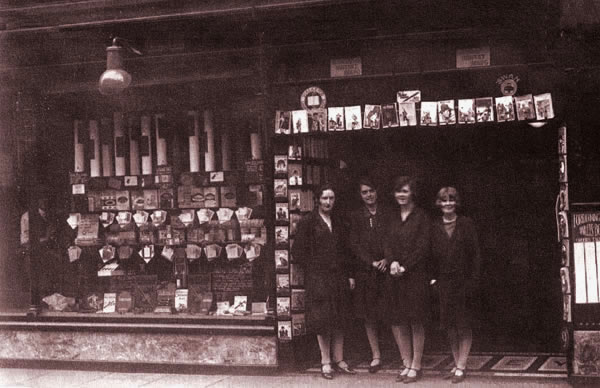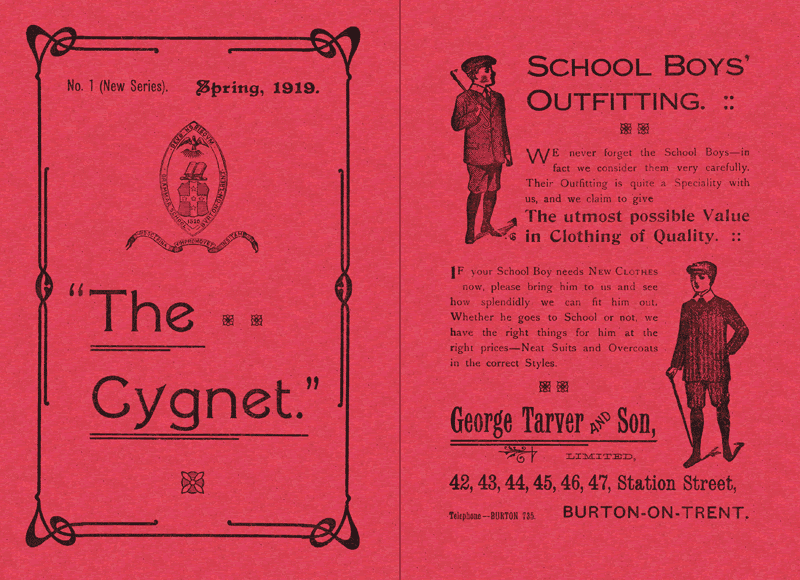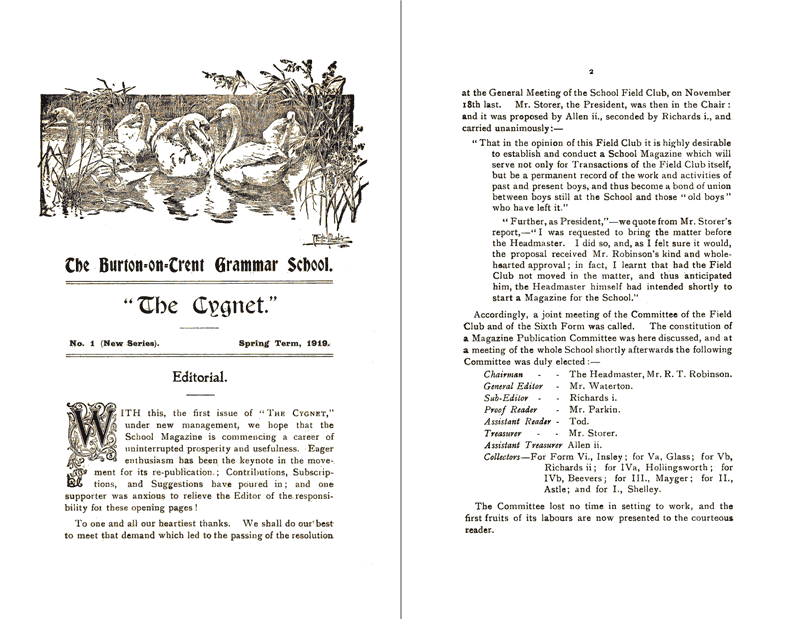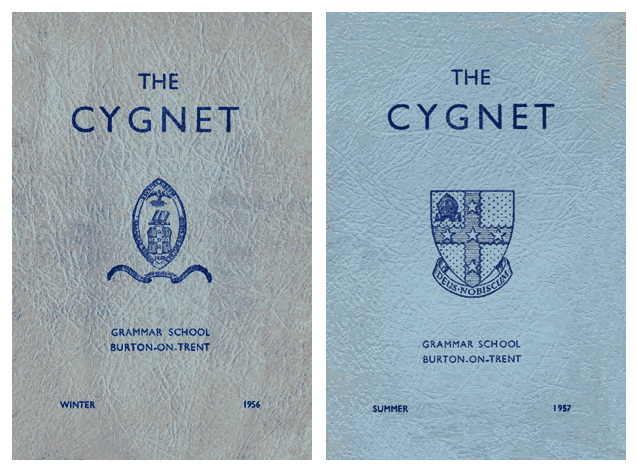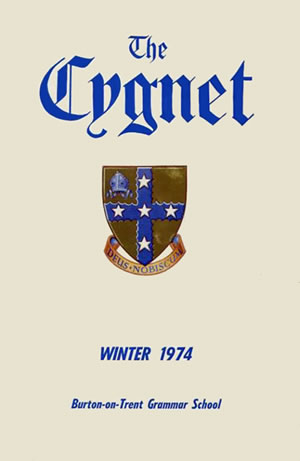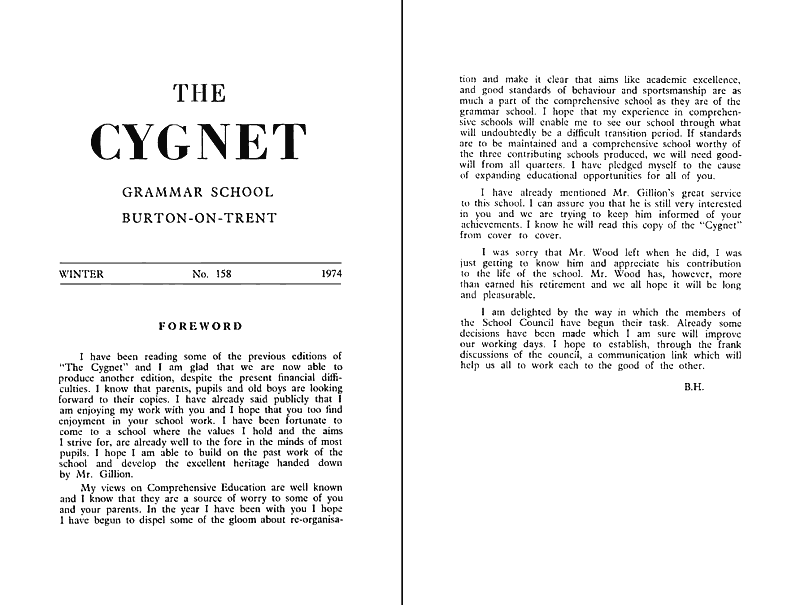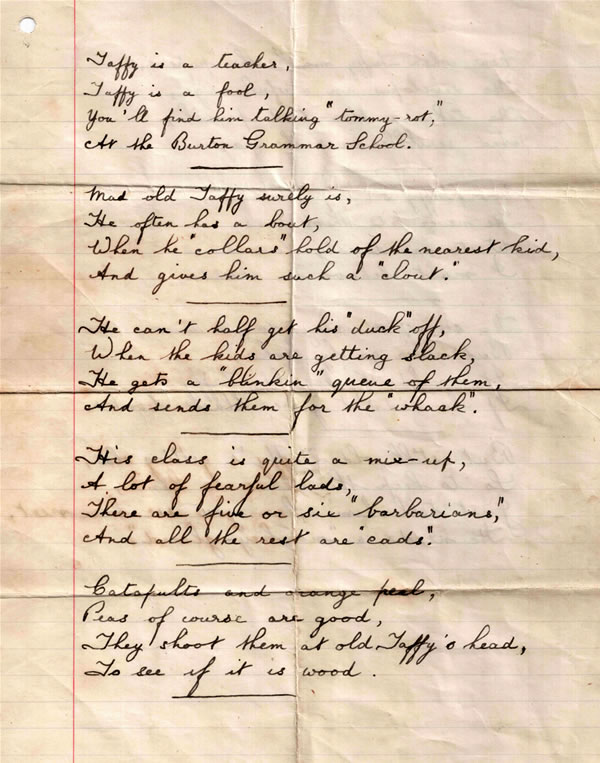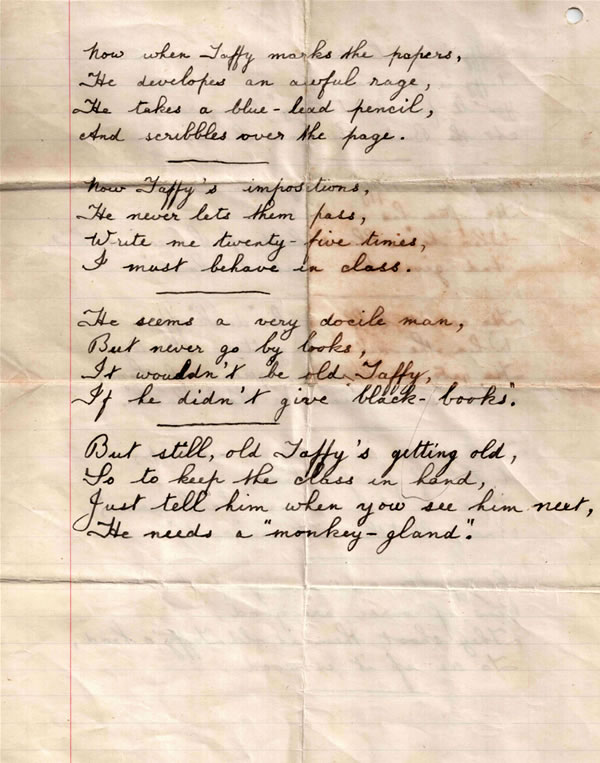1951 was a fairly key year. It was the final year that the School Certificate and Higher School Certificate were taken before they were respectively replaced by GCE (General Certificate of Education) ‘O’ and ‘A’ Levels; one taken at aged 16, the other at 18. This had been called for since the minimum school leaving age was raised from 14 to 15 in 1947.
The intention was to cater for the increase range of subjects available to pupils and to revise the syllabus of some subjects to make them more relevant. The greater range of subjects was reflected in the results. In 1951, 50 School Certificates and 18 Higher School Certificates were awarded. The following year, after the introduction of GCE, and with only a very slight increase in the pupil population, 75 GCE ‘O’ Levels and 38 GCE ‘A’ Levels were awarded.
This picture was taken at the 1952 Speech Day, the first year after the education reform. Speech Day took place at Burton Town Hall until the school moved to Winshill where the Hall and Balcony made for a much better venue.
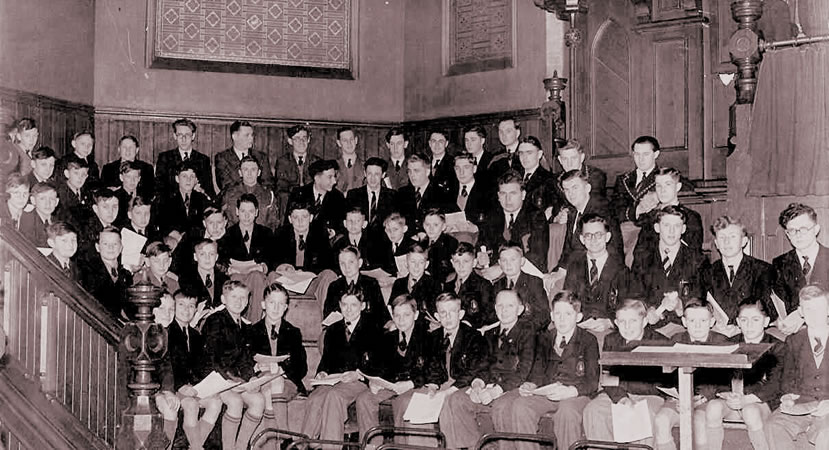
Back Row: Mick Harrison, Terry Bentley, Ivan Laud, B04, Mike Freegarde, B06, B07, B08, J. Tovey, Geraint Evans, Ralph Hodson
4th Row: Brian Woollett, Alan Robinson, Paul Williams, 404, Ted Ufton, 406, Ralph White, 408, 409, Ron Keightley, Bob Lester, Bob Garnham
3rd Row: Stuart Watts, 302, ‘Arthur’ Askey, 304, Tony Parker, Maurice Kersey, Godfrey Cooper, Alf Barber, Les Harrison, Pete Gostelow, Michael Lawrence, 312, 313
2nd Row: Ian Robertson, Laurence Ashley, Dickie Ward, Chris Goddard, 05, 06, Geoff Mortimer, Chris Hopkins, Geo. Moore, Iain Cotton, Ray Gilbert, 212
Front Row: F01, F02, Roger Sharp, Peter Smith, Peter Taylor, Joey Bridges, Dave Batty, Cliff Mountney, Roger Potts, John Ash, John Cotton, Peter Graley, Robin Smedley
